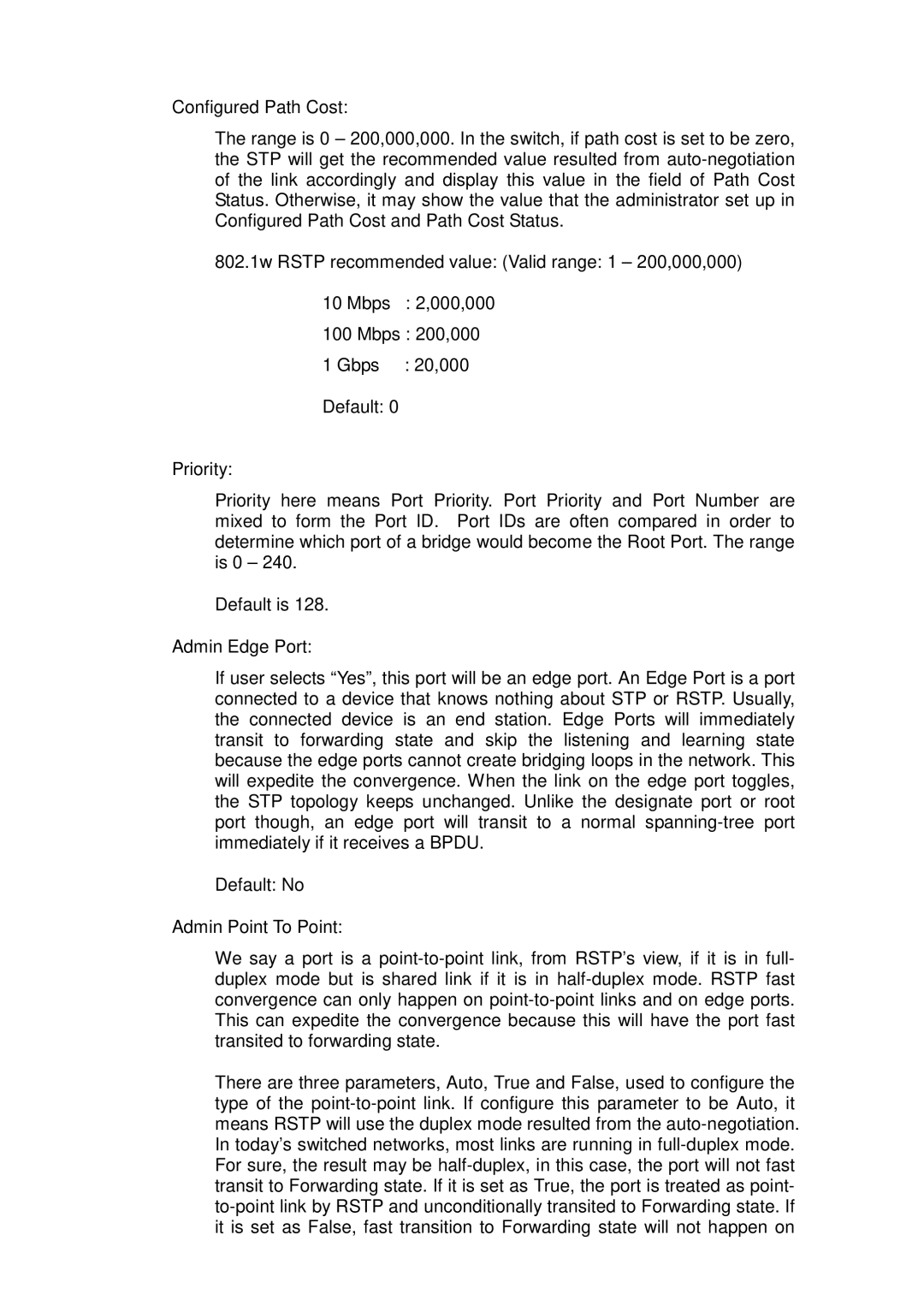Configured Path Cost:
The range is 0 – 200,000,000. In the switch, if path cost is set to be zero, the STP will get the recommended value resulted from
802.1w RSTP recommended value: (Valid range: 1 – 200,000,000)
10 Mbps : 2,000,000
100 Mbps : 200,000
1 Gbps : 20,000
Default: 0
Priority:
Priority here means Port Priority. Port Priority and Port Number are mixed to form the Port ID. Port IDs are often compared in order to determine which port of a bridge would become the Root Port. The range is 0 – 240.
Default is 128.
Admin Edge Port:
If user selects “Yes”, this port will be an edge port. An Edge Port is a port connected to a device that knows nothing about STP or RSTP. Usually, the connected device is an end station. Edge Ports will immediately transit to forwarding state and skip the listening and learning state because the edge ports cannot create bridging loops in the network. This will expedite the convergence. When the link on the edge port toggles, the STP topology keeps unchanged. Unlike the designate port or root port though, an edge port will transit to a normal
Default: No
Admin Point To Point:
We say a port is a
There are three parameters, Auto, True and False, used to configure the type of the
